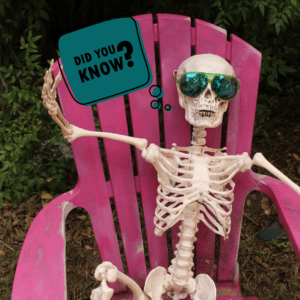Tips for sleeping with sciatica
Do you have sciatic nerve pain and struggle to sleep 😴 at night? Sciatica can make sleeping quite difficult as it’s painful and uncomfortable, but sleep helps to heal 🌈 and reduce inflammation so it is important we get as much as we can.
Here are our helpful tips for sleeping with sciatica to help you find relief from sciatic pain and have a good night’s rest 💤.
Use a pillow
There are two ways that you can use a pillow while you’re sleeping to get yourself into a comfortable position that doesn’t put any stress on your sciatic nerve.
The first way is to place a pillow between your legs while you sleep. There is research 📜 that suggests that sleeping on your side with a pillow between your thighs may reduce pressure on your spine. The best way to do this is to lie on your side with your knees slightly bent and then place a normal bed pillow, a body pillow, a knee pillow, or a wedge pillow, between your thighs and knees.
Another way to use a pillow as an aid to your sleeping position, is to lie on your back and elevate your knees with a pillow. Lie on your back 🛌 and keep your bum and heels in contact with your bed. Then bend your knees slightly towards the ceiling and slide a pillow under your knees. You can slowly add extra pillows until you find a comfortable knee and lower back position that best suits you.
Use a towel
Keeping your spine in a neutral position when you sleep may help sciatica-related pain. By using a towel, you can keep your spine in a neutral position by reducing the gap between your lower back and your mattress.
To try out this position, lie facing up with a comfortable pillow behind your head. Then, slide a small rolled-up towel under your lower back so that you can keep your pelvis in a comfortable and neutral position.
This position can also be effective if you combine it with a pillow under your knees, if it’s comfortable for you to do so, of course.
Avoid this position
If you’re trying to reduce sciatica pain while you sleep, it’s best to avoid 🙅♀️ sleeping on your tummy. The same goes for pretty much any other kind of lower back (or neck) pain. Why? When you sleep on your tummy, your spine curves towards the mattress and this curving can put a lot of stress on your muscles and joints. It also means that the muscles in your back remain relatively contracted, which means you’re not completely relaxed.
No matter what position you sleep in, it’s important to avoid twisting your spine or hips. This can put pressure on your sciatic nerve which isn’t ideal when dealing with this condition.
Other tips to relieve sciatic pain when sleeping
Here are some of the tips we share with our patients at Inspired Health to make sleeping with sciatica a bit more comfortable:
- Avoid very soft mattresses. They can cause your body to sink into it and put your spine out of alignment. Rather try a medium to firm mattress or even a self-adjustable mattress. A 2015 study found that medium-firm mattresses were the best for promoting sleep quality and spinal alignment.
- Body and knee pillows work wonders. They provide great support, can be moulded to suit how you prefer to sleep, and may prevent you from flipping from your side to your tummy during the night.
- Follow a good sleep routine. Keep your bedroom completely dark and at a neutral temperature. Go to bed at the same time every night and avoid caffeine and sugar before bed as they can increase inflammation.
To learn more about what you can do to relieve sciatica pain and live a more comfortable life with the condition, keep an eye on Inspired News





